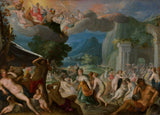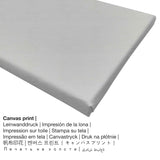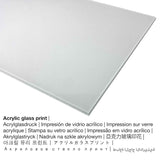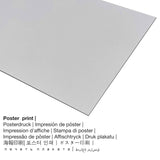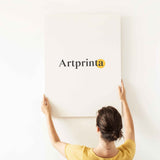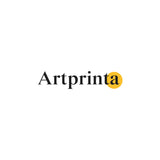Hans Rottenhammer, 1604 - ọdịda nke Phaeton - ọmarịcha nka
Ụtụ gụnyere. Mbupu gbakọrọ na ndenye ọpụpụ.
What does the website of the Mauritshuis say about the 17th century work of art painted by Hans Rottenhammer? (© - Maurithuis - Maurithuis)
Diego Duarte, Antwerp, before 1676-1691 (492 guilders); his nephew Manuel Levy Duarte, 1691; Jan van Beuningen, Amsterdam, 1716; his sale, Amsterdam, 13 May 1716 (Lugt 257), no. 3 (1,010 guilders); Johan van Schuylenburch, Haarlem; his sale, 20 September 1735 (Lugt 453), no. 34 (for 305 guilders to ‘Verlaar’); Steven Theroude Gallery; Johan Hendrik, Count van Wassenaer Obdam, The Hague, 1745; his sale, The Hague, 19 August 1750 (Lugt 736), no. 67 (1,510 guilders); Govert van Slingelandt, The Hague, 1750-1767; his widow, Agatha Huydecoper, The Hague, 1767-1768; Van Slingelandt sale, The Hague, 18 May 1768 (Lugt 1683), no. 17; the entire collection sold to Prince William V; Prince William V, The Hague, 1768-1795; confiscated by the French, transferred to the Muséum Central des Arts/Musée Napoléon (Musée du Louvre), Paris, 1795-1815; Royal Picture Gallery, housed in the Prince William V Gallery, The Hague, 1816; transferred to the Mauritshuis, 1822
Nchịkọta ngwaahịa nka
This 17th century artwork was made by the artist Hans Rottenhammer in 1604. The version of the artwork had the following size: height: 39 cm width: 54,5 cm | height: 15,4 in width: 21,5 in. Mmanụ na ọla kọpa na panel was used by the painter as the medium of the artpiece. The original artwork was inscribed with the following details - dated and signed: 1604 / H [?] O [?] Rottnh / F.. Moveover, this artwork belongs to the digital art collection of Mauritshuis, which the Mauritshuis is home to the best artworks of Dutch painting of the seventeenth century. With courtesy of: Maurithuis, Hague (ọha na eze). Creditline of the artwork: Diego Duarte, Antwerp, before 1676-1691 (492 guilders); his nephew Manuel Levy Duarte, 1691; Jan van Beuningen, Amsterdam, 1716; his sale, Amsterdam, 13 May 1716 (Lugt 257), no. 3 (1,010 guilders); Johan van Schuylenburch, Haarlem; his sale, 20 September 1735 (Lugt 453), no. 34 (for 305 guilders to ‘Verlaar’); Steven Theroude Gallery; Johan Hendrik, Count van Wassenaer Obdam, The Hague, 1745; his sale, The Hague, 19 August 1750 (Lugt 736), no. 67 (1,510 guilders); Govert van Slingelandt, The Hague, 1750-1767; his widow, Agatha Huydecoper, The Hague, 1767-1768; Van Slingelandt sale, The Hague, 18 May 1768 (Lugt 1683), no. 17; the entire collection sold to Prince William V; Prince William V, The Hague, 1768-1795; confiscated by the French, transferred to the Muséum Central des Arts/Musée Napoléon (Musée du Louvre), Paris, 1795-1815; Royal Picture Gallery, housed in the Prince William V Gallery, The Hague, 1816; transferred to the Mauritshuis, 1822. What is more, the alignment of the digital reproduction is odida obodo ma nwee oke nke 1.4: 1, nke na-egosi na ogologo bụ 40% ogologo karịa obosara.
Nhọrọ ihe enwere ike
The product dropdown menu provides you with the chance to choose a material and a sizeaccording to your individual preferences. Choose among the following product options now to match your preferences in size and material:
- Mbipụta kanvas: A canvas print, which should not be mistaken with a canvas painting, is a digital replica printed on an industrial printing machine. How do I hang a canvas on the wall? The great advantage of canvas prints is that they are relatively low in weight, which implies that it is quite simple to hang the Canvas print without any wall-mounts. Therefore, canvas prints are suitable for all kinds of walls.
- Glass acrylic e biri ebi (nwere ezigbo mkpuchi iko): An acrylic glass print, which is sometimes named as a an art print on plexiglass, will convert the original into amazing home decoration. Additionally, it is a good alternative to aluminium and canvas art prints. The work of art is being printed with the help of state-of-the-art UV printing machines. The special effect of this are vibrant, impressive colors.
- Aluminom dibond mbipụta (ọla): Aluminium Dibond prints are metal prints with an impressive effect of depth - for a modern impression and non-reflective surface. For your Direct Aluminium Dibond option, we print the selected work of art on the aluminium composite surface.
- Mbipụta akwụkwọ mmado (ihe kwaaji): The poster is a UV printed cotton canvas with a slightly roughened surface finish. A poster print is suited for putting your art print in a customized frame. Please note, that depending on the size of the poster print we add a white margin of approximately 2-6cm around the work of art, which facilitates the framing with your custom frame.
Nchịkọta ihe nkiri
| Aha onye nka: | Hans Rottenhammer |
| Ọrụ: | onye na-ese ihe |
| Otu nka: | nna ukwu ochie |
| Oge ndu: | 60 afọ |
| Amụrụ n'afọ: | 1564 |
| Nwuru: | 1624 |
Iberibe tebụl nka
| Aha ọrụ nka: | "Ọdịda nke Phaeton" |
| Nchịkọta nke ọrụ nka: | sere |
| Otu sara mbara: | nka ochie |
| oge: | 17th narị afọ |
| Emepụtara n'afọ: | 1604 |
| Afọ nka: | karịa afọ 410 |
| Agba na: | mmanụ na ọla kọpa na panel |
| Akụkụ izizi (ọrụ nka): | elu: 39 cm obosara: 54,5 cm |
| Akara aka na nka nka: | dated and signed: 1604 / H [?] O [?] Rottnh / F. |
| Ụlọ ihe ngosi nka: | Maurithuis |
| Ebe ngosi nka: | Hague, South Holland, Netherlands |
| Ebe nrụọrụ weebụ ihe ngosi nka: | www.mauritshuis.nl |
| Ụdị nka nka: | ngalaba ọha |
| Site n'aka: | Maurithuis, Hague |
| Ebe kredit nke ọrụ nka: | Diego Duarte, Antwerp, before 1676-1691 (492 guilders); his nephew Manuel Levy Duarte, 1691; Jan van Beuningen, Amsterdam, 1716; his sale, Amsterdam, 13 May 1716 (Lugt 257), no. 3 (1,010 guilders); Johan van Schuylenburch, Haarlem; his sale, 20 September 1735 (Lugt 453), no. 34 (for 305 guilders to ‘Verlaar’); Steven Theroude Gallery; Johan Hendrik, Count van Wassenaer Obdam, The Hague, 1745; his sale, The Hague, 19 August 1750 (Lugt 736), no. 67 (1,510 guilders); Govert van Slingelandt, The Hague, 1750-1767; his widow, Agatha Huydecoper, The Hague, 1767-1768; Van Slingelandt sale, The Hague, 18 May 1768 (Lugt 1683), no. 17; the entire collection sold to Prince William V; Prince William V, The Hague, 1768-1795; confiscated by the French, transferred to the Muséum Central des Arts/Musée Napoléon (Musée du Louvre), Paris, 1795-1815; Royal Picture Gallery, housed in the Prince William V Gallery, The Hague, 1816; transferred to the Mauritshuis, 1822 |
Tebụl edemede
| Ụdị edemede: | ezi nka mmeputakwa |
| Mmeputakwa: | dijitalụ mmeputakwa |
| Usoro mmepụta: | mbipụta dijitalụ (Mbipụta UV ozugbo) |
| Nlụpụta: | German mere |
| Ụdị ngwaahịa: | mmepụta ihe na-achọ |
| A na-atụ aro iji ngwaahịa eme ihe: | nka mgbidi, mma mgbidi |
| Nhazi onyonyo: | usoro odida obodo |
| Oke akụkụ onyonyo: | 1.4: 1 (ogologo: obosara) |
| Nsonaazụ: | ogologo bụ 40% ogologo karịa obosara |
| Akụrụngwa dị: | akwụkwọ mmado (akwụkwọ kwaaji), mbipụta enyo acrylic (nwere ezigbo mkpuchi iko), mbipụta akwa akwa, mbipụta ọla (aluminium dibbond) |
| Mbipụta kanvas (akwa akwa na etiti ihe ndọtị) dị iche iche: | 70x50cm - 28x20", 140x100cm - 55x39" |
| Mbipụta iko acrylic (nwere ezigbo mkpuchi iko) nhọrọ nha: | 70x50cm - 28x20", 140x100cm - 55x39" |
| Nhọrọ nha nke akwụkwọ mmado (akwụkwọ kwaaji): | 70x50cm - 28x20" |
| Mpempe akwụkwọ Dibony (ihe alumnium) nha: | 70x50cm - 28x20", 140x100cm - 55x39" |
| Nhazi mbipụta nka: | agunyeghi |
Important note: We try what we can to describe the art products as exact as possible and to exhibit them visually. Although, the pigments of the printed materials and the imprint may vary slightly from the presentation on the device's screen. Depending on your settings of your screen and the condition of the surface, colors might not be printed as exactly as the digital version depicted here. Bearing in mind that all our fine art prints are processed and printed by hand, there might as well be minor differences in the motif's size and exact position.
Nwebiisinka © - Artprinta (www.artprinta.com)

